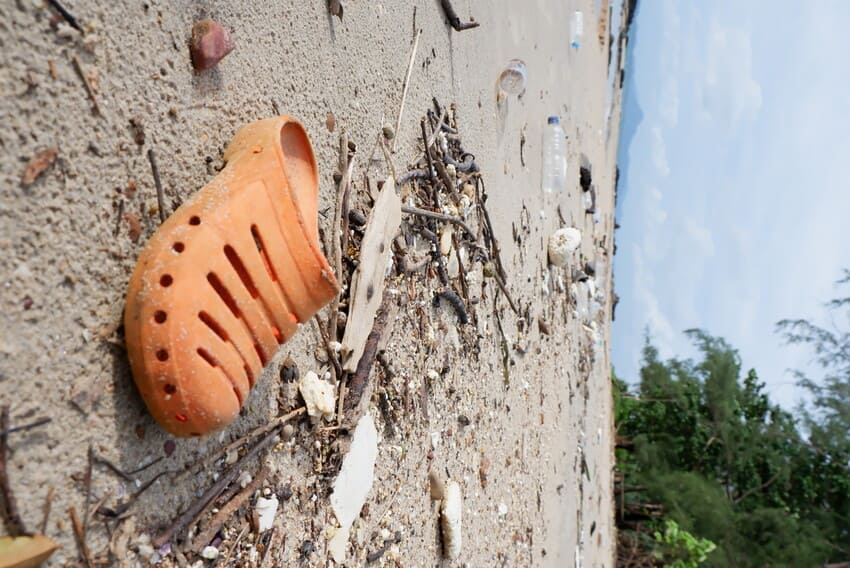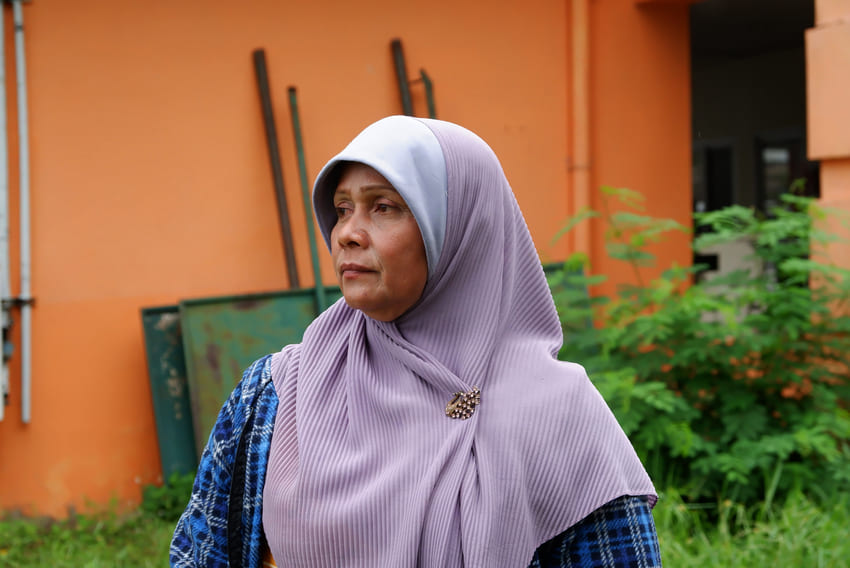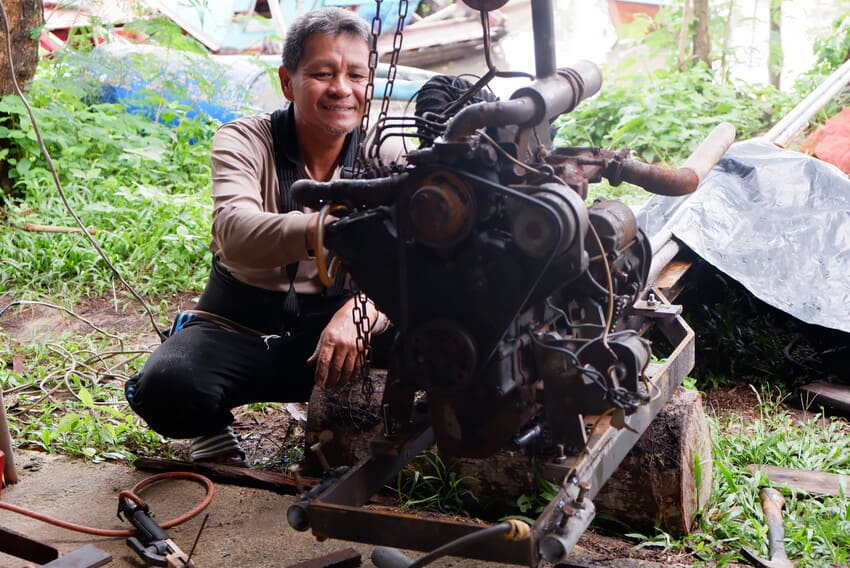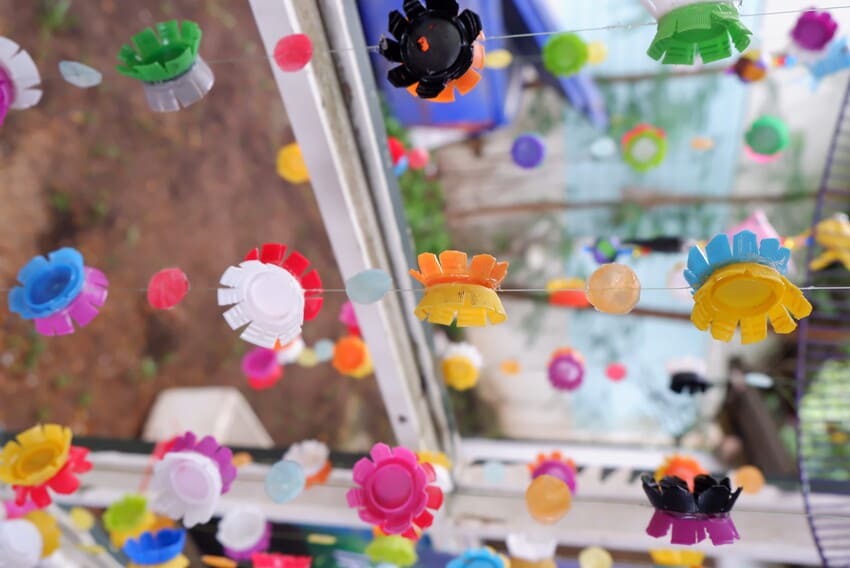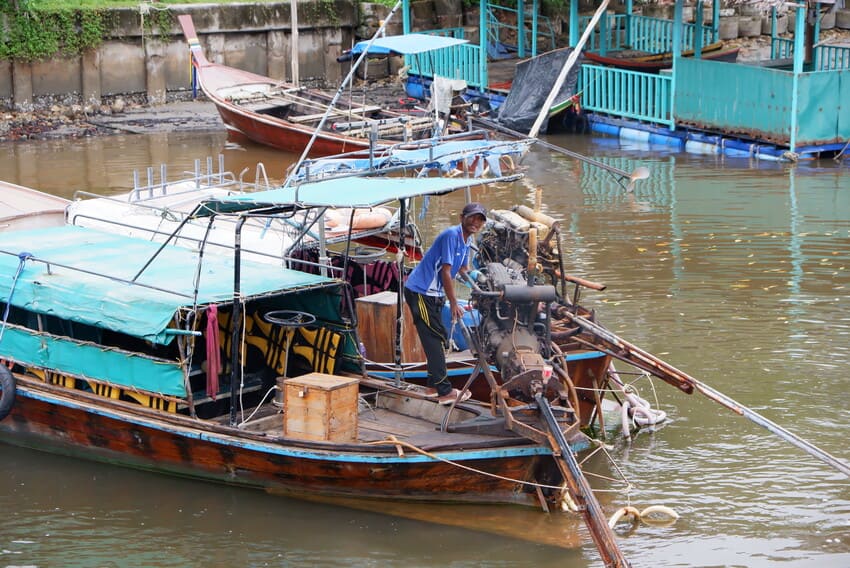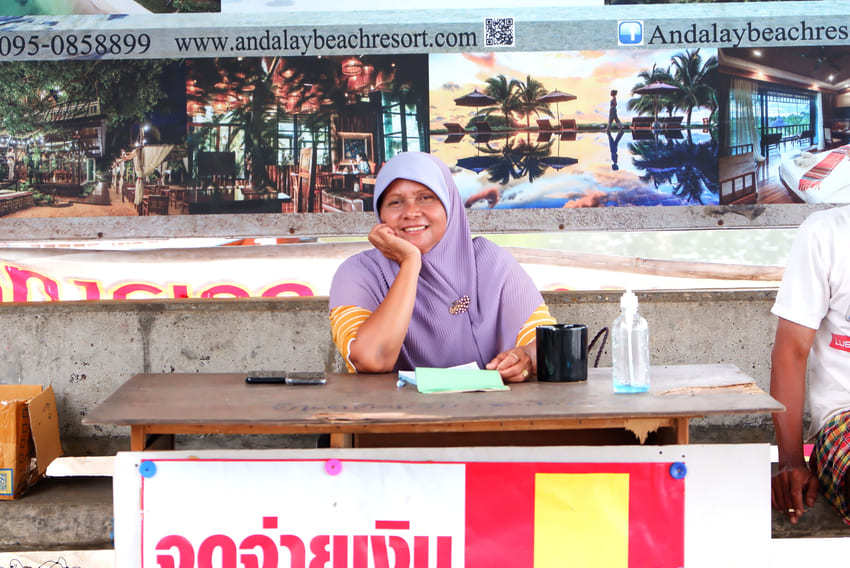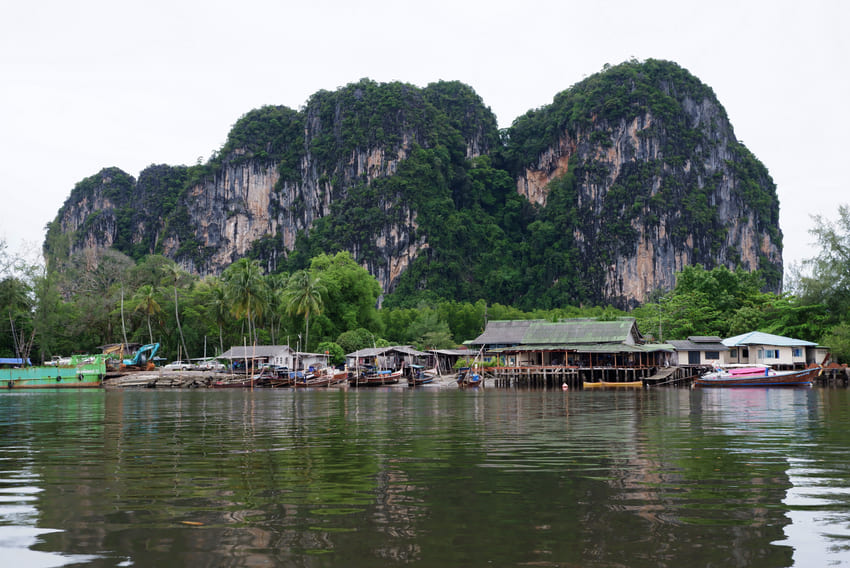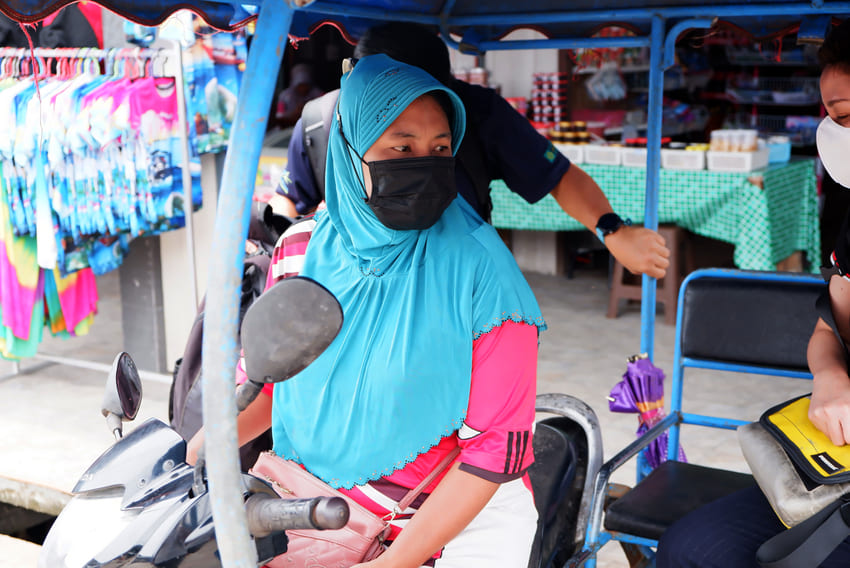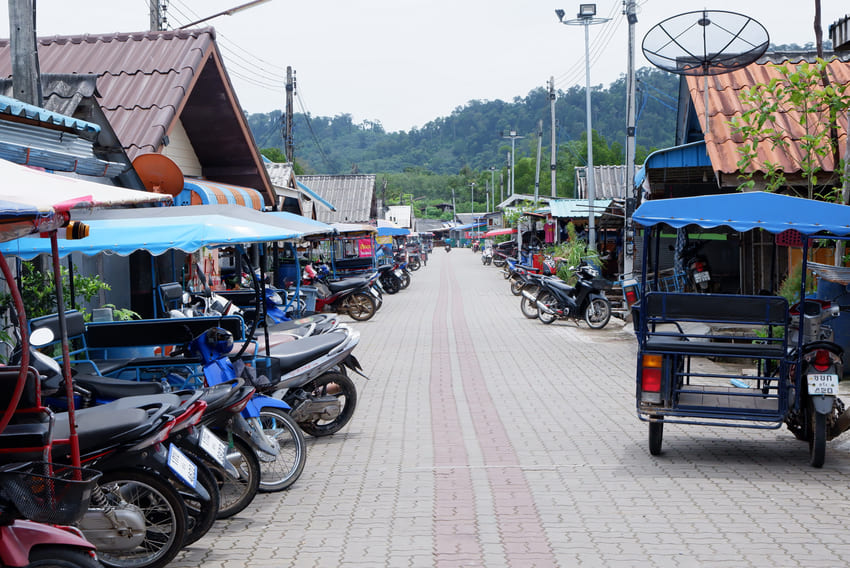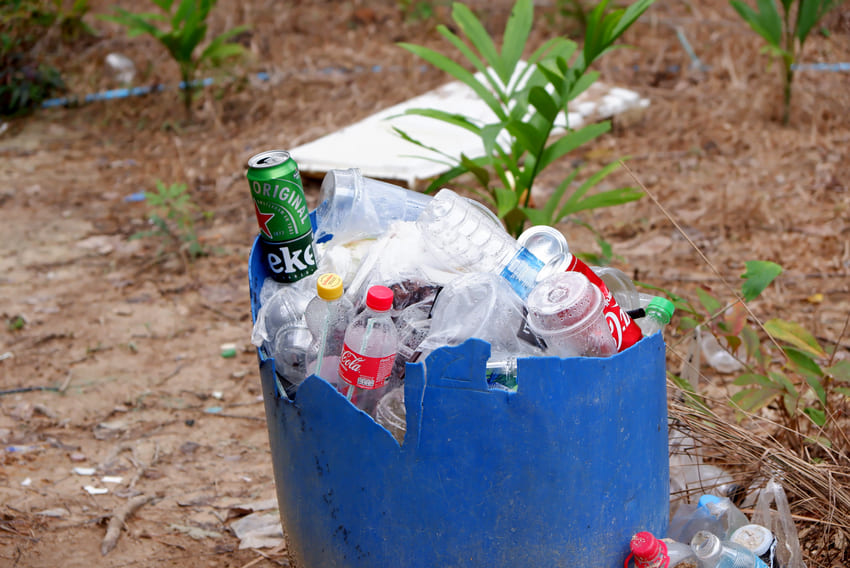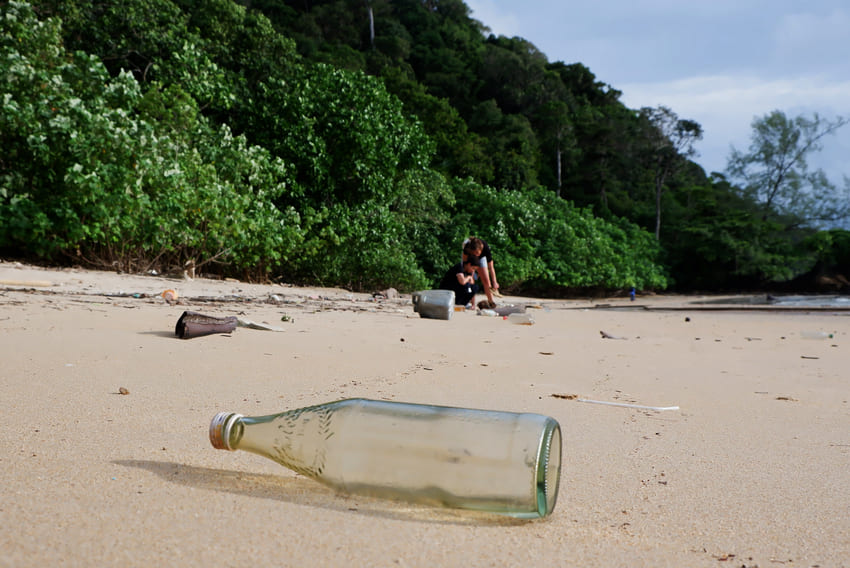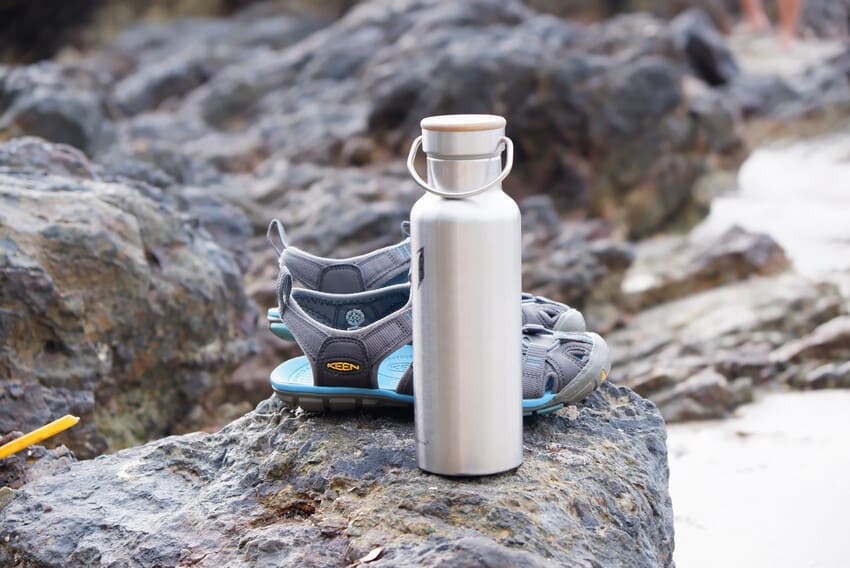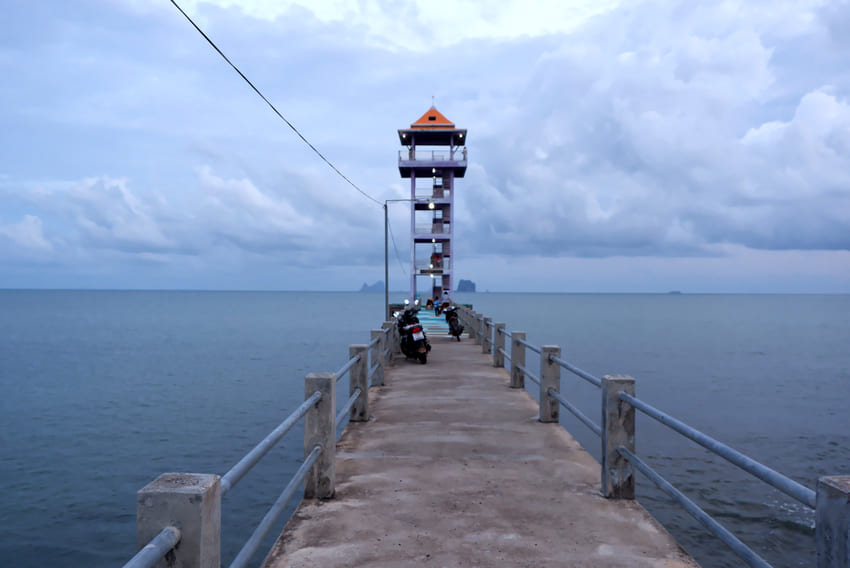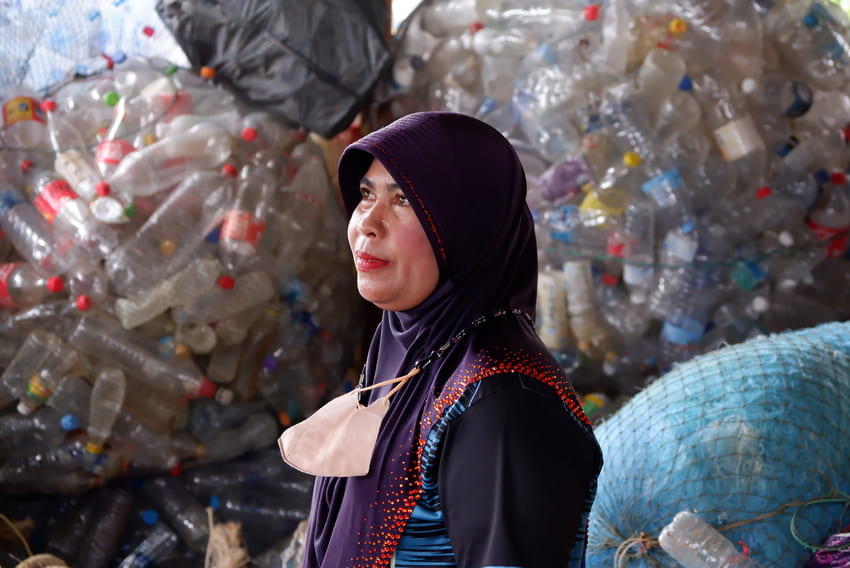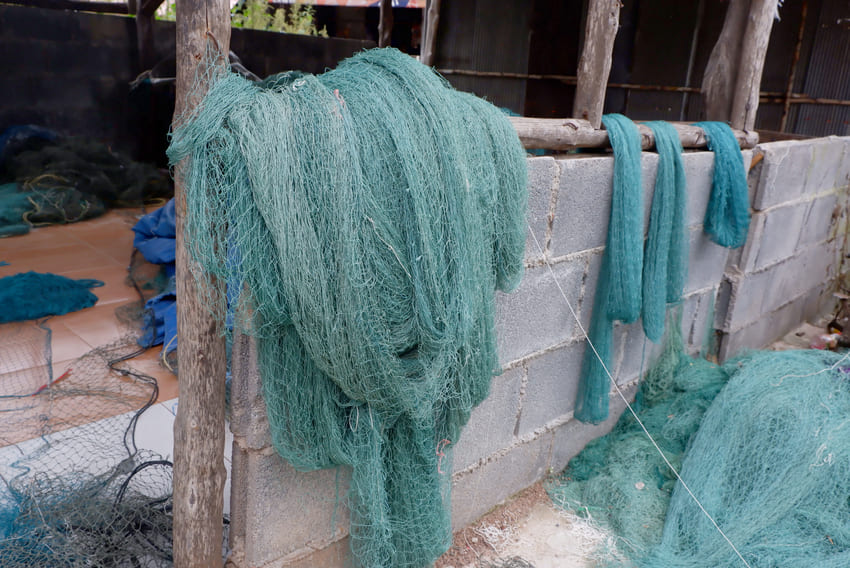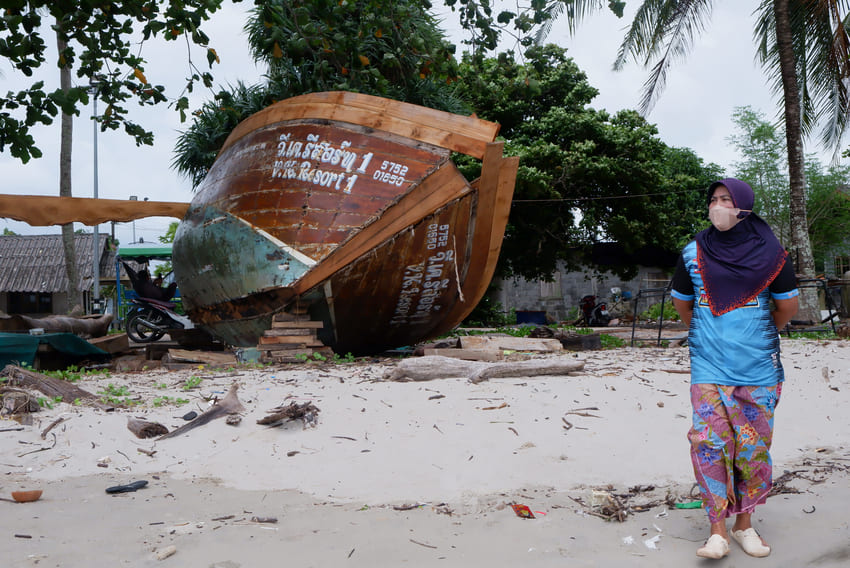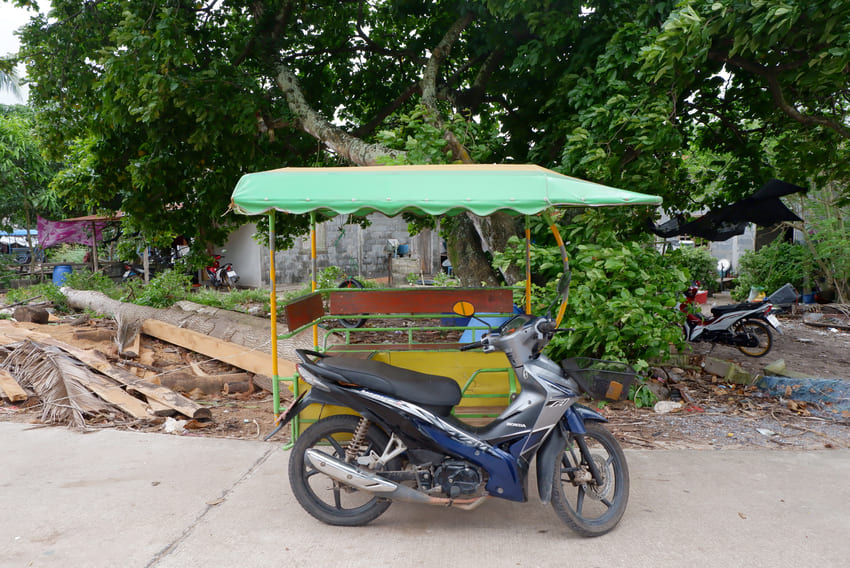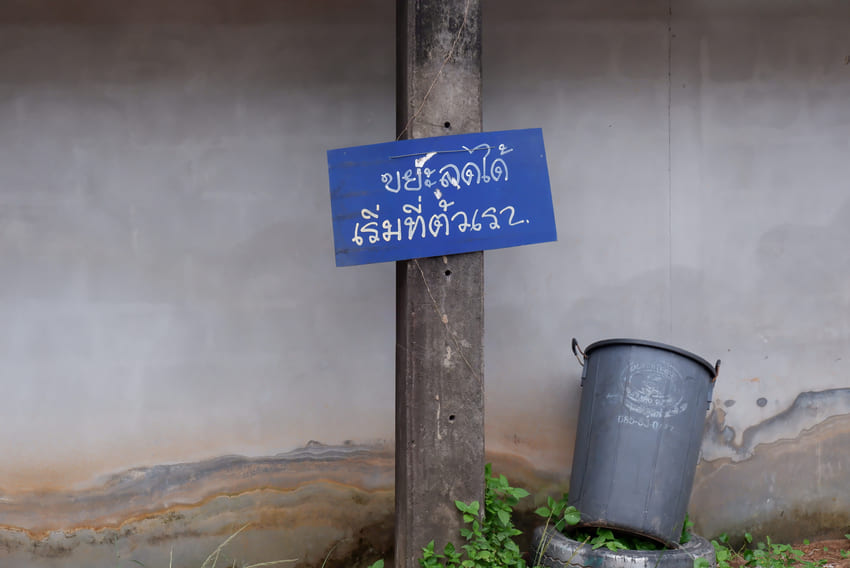Residents of Libong Island strengthen plastic waste management after the death of dugong “Mariam”
Dugongs, or 'Duyung' as they are called by Libong islanders, are animals whose history with the people of Libong goes generations back.
A tale told by folk songs has it that there once was a fisherman who would bring home some seagrass for his heavily pregnant wife every time he went fishing. She was very fond of the taste of the seagrass and became so obsessed that one day she left home to forage for seagrass and never returned. She eventually turned into a mermaid or duyung bound to the sea, so the fisherman followed her into the sea as well.
This romantic story is written on a small sign in a corner of Hat Yao Pier, Trang. It reflects the deep connection between Trang residents and dugongs. Early in an overcast morning, the project team boarded a boat to follow up on another project on plastic waste disposal financed by the “Rethinking Plastics” project and implemented byIUCN and the residents of Libong.
"Trang is the largest source of seagrass in Thailand. The majority of Trang’s coastal zones are covered by mangrove forests with rich biodiversity. This includes seagrass meadows, which serve as nurseries for many marine species, as well as food sources for dugongs."
Kittipan “M” Sabkhoon, the main coordinator of Libong’s community project to tackle marine debris, told us on the boat as we looked at the mangrove forest lining the Andaman Sea. A representative of the International Union for Conservation of Nature (IUCN), he works with the people of Libong Island and neighboring communities to reduce the impacts of marine debris.
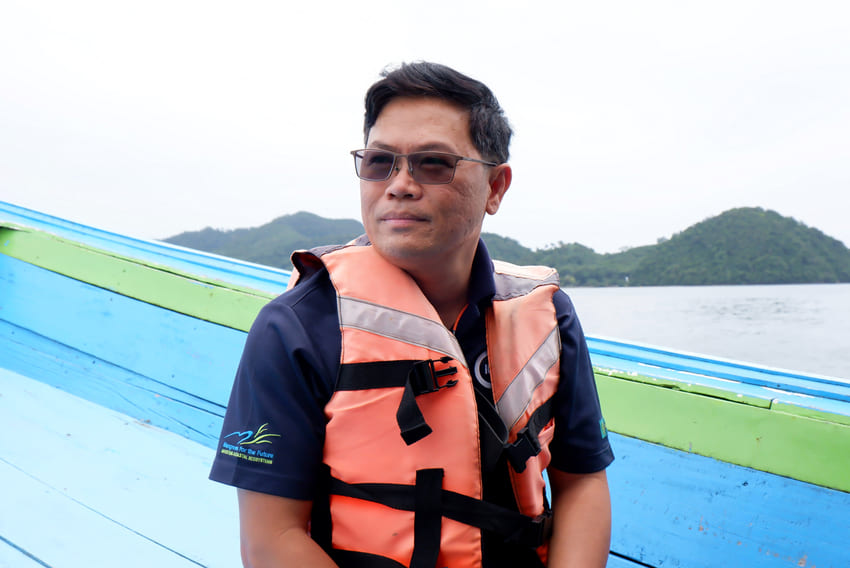
"The communities here were already active on the issues since they cherish nature so much, and already knew about microplastic contamination in food. We are financed by “Rethinking Plastics” to help the communities develop their projects more systematically. My job is to offer knowledge and help them utilize it. The problems with garbage here are caused by the communities, tourism, and marine debris all combined."
Like other regions in Thailand, waste issues here are brought about by the rapid development that transformed the lifestyles of residents. The impacts of plastic waste on aquatic lives including dugongs are tragic to say the least.
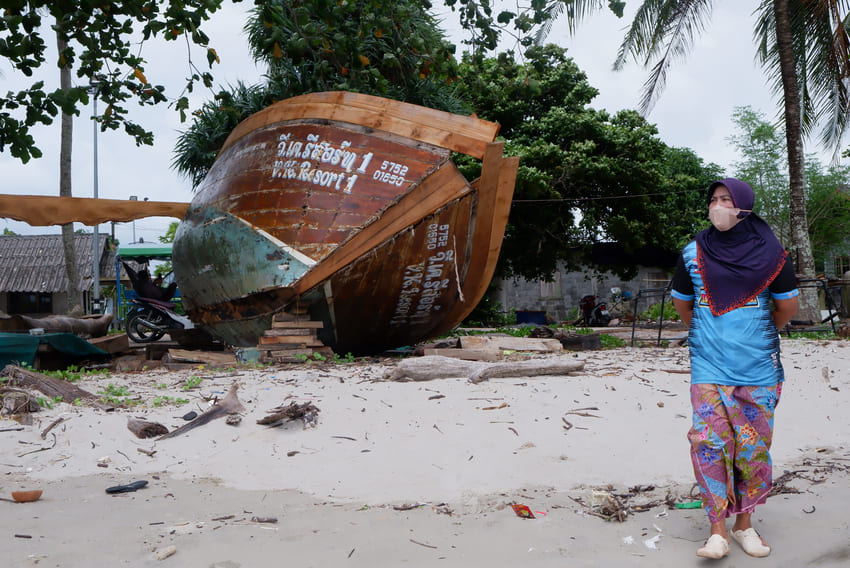
In 2019, a female dugong calf called "Mariam" was separated from her mother and stranded on Ao Teung Beach, Krabi. Experts brought the malnourished orphan to Libong Island, where she had easy access to food sources like seagrass meadows and could be among conservationists and dugong-loving islanders. Being adorable and human friendly as she was, Mariam quickly won over the public’s hearts. However, soon she got attacked by a local dugong and fell ill. Mariam’s health deteriorated until she eventually died. An autopsy found that she had plastic waste clogging intestines as well as blood infection. The news caused a major wave of awareness of marine plastic pollution in Thailand.
"I was running a soy milk stall with my aunt in Bangkok at the time. When I heard the news that Mariam was dead, it upset me that my hometown had fallen so low. So, I went home to help them (the islanders) clean up garbage."
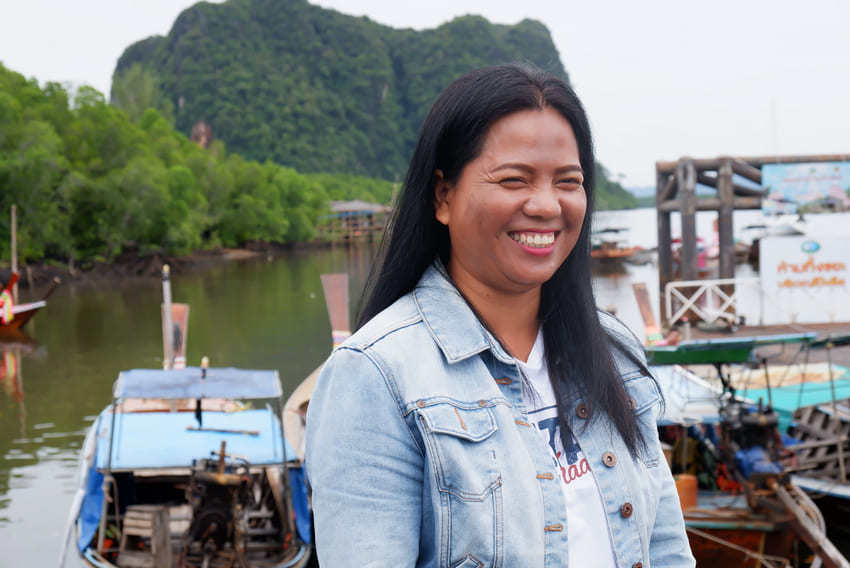
Said Ki is one of the community leaders of Libong. It is clear that the people on Libong Island are familiar and feel connected with dugongs. After returning from Bangkok to help collect garbage, Ki made a living by collecting marine litter with a boat to sell to the recyclers. Most of the waste that can be sold for a good price is fishing nets strewn in the sea.
"Where there are people, there is garbage. The pier, for example, was cleaner before 7-Eleven arrived. Now more shoppers and tourists mean more garbage, and there’s no end to collecting. I want our sea to stay beautiful like this."
This is another voice that reflected the changes of Libong from Liah, the community leader of Village No. 6 from Hat Yao. Working as traffic manager on the route between Hat Yao Pier and Libong Island, Liah started placing different types of garbage cans at the pier. Every week, she and the ladies from Village No. 6 would sell the garbage to the recycler and keep some for handicraft in the community crafting project that brings extra income for the village.
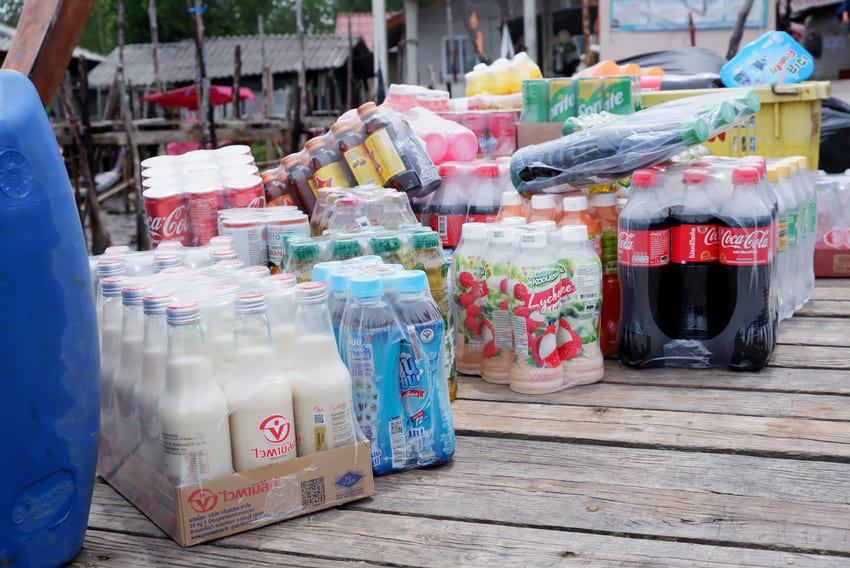
Libong is a small island of 35 square kilometers with an approximate population of 3,500 people, almost all of which are Muslims. Libong is neither a tourist hotspot nor a recreational retreat, however, its culture is quite interesting. The men fish and tap rubber trees, while some of the women drive sidecar motorcycles for tourists beside managing their houses. Visitors tend to be those interested in learning their way of life or seeing dugongs. There is a marine observation tower at the end of the island, making it a destination where people of all ages can appreciate the biodiversity.
The Libong Archipelago Wildlife Reserve on the east of Libong is an important natural resource of Thailand. Libong’s shallow waters house an abundance of seagrasses. When the tide recedes, large expanses of seagrass meadows can be seen. If the seagrasses die out, not only dugongs will disappear, but sea turtles and many other species of fish in the ecosystem as well. In addition, the seagrass also helps clean polluted water for the people and animals residing around Trang waters.
If you ask the islanders for the protector of duyung, they will probably tell you to look for a lodging business called Libong Camp and ask for Chatra as she is the person who found Mariam stranded on the beach. She was an advocate for the dugongs and provided for the volunteers and veterinary team that came to work on the island.
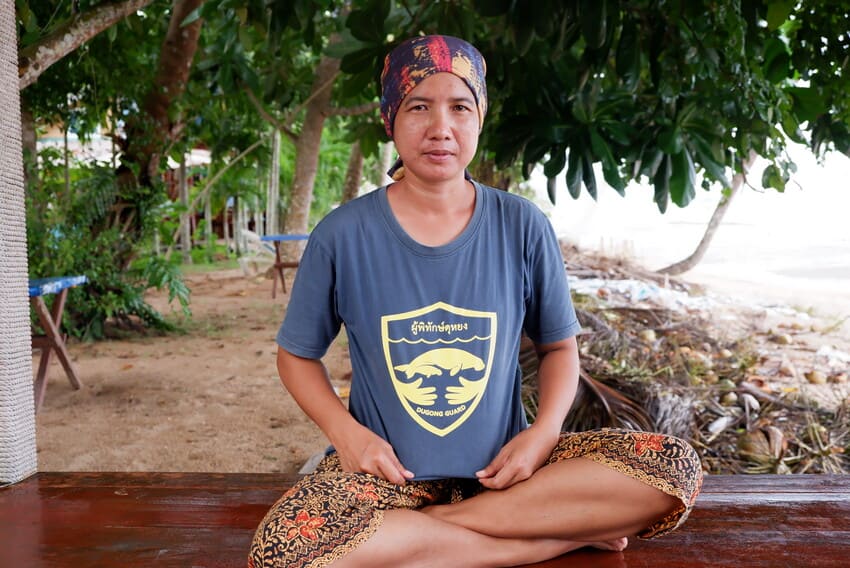
"Libong is famous for ecotourism. People come here to watch dugongs. In the shallows when the tide goes out in the morning, you can see marks left by grazing dugongs. We recognize all dugongs. Mariam was the youngest and the last who arrived here, but she was popular because of her attachment to humans. Humans fed her milk. Mariam was also attached to an orange canoe nicknamed "Mama Orange". Whenever she saw it, she would hurry over as if it was her mom."
Chatra brought us on a sidecar motorcycle into the Libong Archipelago Wildlife Reserve, then led us through the forest on foot. Litter, milk boxes, water bottles, and overfilled garbage cans lined our path. Chatra said that a garbage can placed here always fills up in a flash because tourists assume that someone will just come and empty it. Then we walked down to a serene beach. The water was clear and the sand white as expected from the Andaman Sea. Despite that, it was hard to take the eyes off the stranded litter that was strewn along the coast.
"We can’t get all the garbage no matter how much we collect, but we keep trying because the sunset here is the most stunning. I want visitors to enjoy it without all the garbage."
When asked what changes the garbage found in Mariam's intestines had inspired in the islanders, Chatra said:
"Pieces like ropes, plastic bags, and straws are carried over by the seawater and get stuck in the seagrasses. When they graze, the dugongs have no idea what they’re eating. The communities here have always been proactive about garbage because we cherish our island. After the Mariam incident, we have volunteers from the island and outside to help remove garbage from the seagrass beds. We’ve been losing a lot of seagrasses as well."
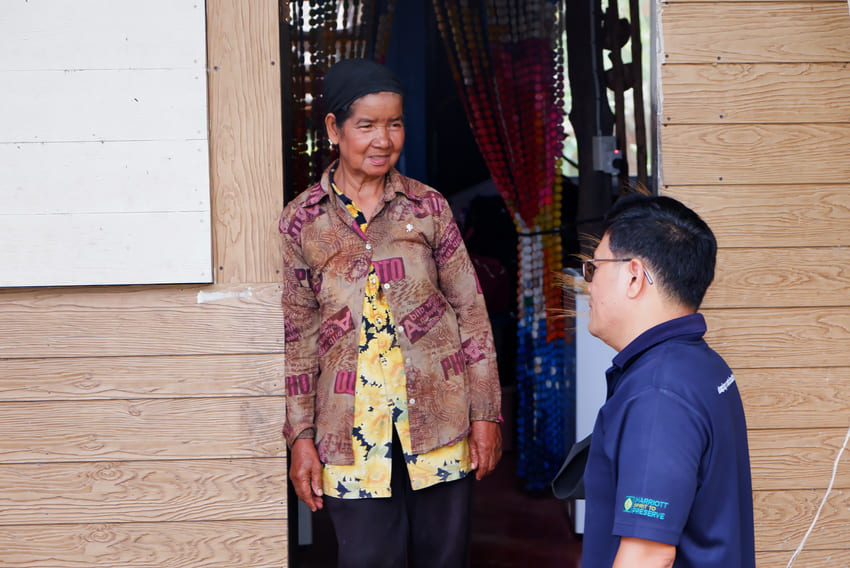
Research from Chiang Mai University found that Thailand had 200 surviving dugongs, and most of them are found in Trang. Repopulation of dugongs is not a job for the volunteers, conservationists, or netizens alone, but the key is enforcement of laws against illegal fishing and wastewater discharge into the environment, plastic waste reduction by all parties from manufacturers to consumers, as well as spreading of knowledge on the importance of the ecosystem through schools and mainstream media.
The communities on Libong Island and the whole Trang are dedicatedly doing their parts to protect the ecosystems of their hometown. However, the responsibility lies on consumers to mind the plastic use as well, because if seagrasses, dugongs, marine lives, and the ecosystem of Trang deteriorate, not only the locals will lose their way of life and income from tourism. If dugongs go extinct, our descendants will only know dugongs as a pregnant woman from the folktale.
Learn more about the “Rethinking Plastics” activities on Koh Libong here: https://rethinkingplastics.eu/pilot-projects-en/93-a-circular-economy-for-islands
